Forbes column report 丨 Several suggestions on pinpointing the focus of the AI industry
I. AI is the future direction of human production and lifestyle, and it is a strategic industry that must be seized tightly
(I) International environment and national strategy focus on the development of artificial intelligence industry
The AI discipline is a comprehensive discipline, and its production has a solid multi-scientific theoretical foundation. It is driven by the four elements of increasingly quantified basic data, continuously improved computing power, continuously optimized algorithm models, and diverse application scenarios. Algorithms are the core of machines to implement AI, and big data is the foundation of artificial intelligence. So far, "AI" has experienced the development of alternating winter and high tide in the 62 years since the Dartmouth Conference was proposed in 1956. It is divided into three stages: the first stage (1956-1980) the birth of artificial intelligence; the second stage (1980-2000) artificial intelligence entered industrialization; the third stage (2000-present) artificial intelligence industry entered a rapid development stage.
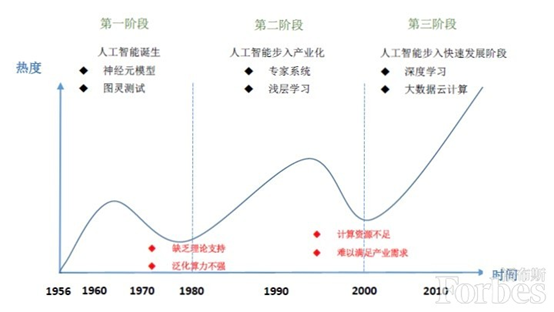
Figure 1: Three stages of AI development
In recent years, thanks to the massive popularity of the Internet, social media, mobile devices and sensors, the amount of data generated and stored globally has increased dramatically, providing a good soil for training artificial intelligence through machine learning methods. In 2016, AlphaGo's victory over the Go World Championship set off a third AI boom. The AI industry ushered in an explosion in 2018. At the current stage, the application of artificial intelligence technology has reached a high point, which has increased the penetration rate of artificial intelligence-related technologies in finance, transportation, security, medical and other fields: for example, human-computer battles and chess; computer vision replaces artificial applications in security, public security, criminal investigation, Industrial production and other fields; speech recognition technology is used for automatic response services in airports, stations, banks and other fields; cloud services derived from network format distributed computing provide AI with a wider range of applications-telemedicine based on expert systems, etc. These successful applications have given unlimited imagination and space for the development of AI science, and have greatly strengthened the industry's confidence in the successful application of large-scale artificial intelligence technology. The development of AI technology will not only change our production and lifestyle, thinking and decision-making methods, but its development and application are of great significance and far-reaching.
At present, China is vigorously developing the science and application of AI. According to incomplete statistics, the scale of China's AI core industry exceeded 70 billion yuan in 2017, and 2018 is the first year of the outbreak of artificial intelligence. The scale of the AI core industry is expected to approach 100 billion yuan. In terms of policies, the introduction of a number of national policies has promoted the rapid development of the artificial intelligence industry in China, and various "AI +" or "+ AI" scenarios are gradually being implemented. On July 20, 2017, the State Council issued the "AI Plan" mentioning that "the rapid development of AI will profoundly change the life of human society and the world." And formulated the strategic goal of AI "three steps". Subsequently, the "Three-year Action Plan to Promote the Development of the New Generation of the AI Industry (2018-2020)" on December 14, 2017 clearly defined the development plan from cultivating intelligent products, breaking through the core foundation, deepening intelligent manufacturing, and building a supporting system.
(I) "Artificial Intelligence Age" is different from "Informatization Age"
Looking back at the 40 years of reform and opening up in China (without discussing the achievements of the primary industry), during the period of rapid informatization, many global giant companies (such as ZTE) have been achieved, bringing decades of high economic indicators; However, only in 2017-2018, when we faced the Western trade war, we found that we had inertia in thinking during the first wave of (informatization) industry development opportunities in the era of information civilization. The entire information industry is mainly focused on rapid and low-cost manufacturing, and does not realize that the essence of information civilization is no longer just a material level, but more importantly, the logical summary of human knowledge and the monopoly of property rights. Therefore, at the core of the strategy Restricted by people, passive in trade wars. In this, the recognition of industrial structure is worthy of reflection. It should be tested again whether "production relations are suitable for the development of productive forces." If we say that in the era of the first wave of information civilization (informatization), intellectual property issues are only useful when entering the legal process; in the era of the second wave of information civilization (artificial intelligence), information is the main means of production, its storage and operation It's all based on the cloud. What the robot can understand and what it can do is a "knowledge logic brain" that is far away somewhere in the cloud. It is specified through the Internet in the form of SaaS services. Once this knowledge and logic support is lost, All robots such as robots, banks, flying in the sky, hospitals, etc. may instantly degenerate into "infant ability" or "mental retardation", have vision, hearing, or even smell, can run and jump, but cannot perform normal Production activities. At present, in the era of the second wave of artificial intelligence industry development opportunities in the era of information civilization, we are worried to see that the academic and practical circles are generally continuing the "puzzle and short-frequency" practice of early industrialization. The situation of “one leaf impediment” may cause the entire health and intelligent industry to repeat the “information age”, leaving a generation lost in a cyclical time of ten to twenty years, thereby causing national level resources Wasteful and passive.
In view of the above, it is necessary to see the panorama and structure of the artificial intelligence industry chain in a timely manner, and to look at the future in the future, to clarify the strategic focus and core of the AI industry.
2. Clarifying the core of the industrial structure and strategy is a prerequisite for finding the focus of the AI industry
(I) The domestic AI industry as a whole is lagging behind and develops in a horrible manner, and the clarity of the industrial chain structure thinking is urgently needed
According to preliminary statistics, the current AI industry mainly involves three categories: "perception and behavior substitution", "knowledge and logic atlas", and "industry applications". The proportion was 47%: 7%: 46%. Among them, large companies prefer the “perception and behavior substitution” approach, and start-ups prefer the “industry application” approach, with the least number of companies involving the core “knowledge and logic map” of AI. The data shows that 85% of domestic "perception and behavior substitution" AI companies are concentrated in the three fields of computer vision, speech and semantics (natural language processing), of which 42% are computer vision related technologies, followed by speech. Recognition and semantic understanding (both 43% in total); compared with foreign AI's "perception and behavior substitution" practice, domestic companies pay more attention to computer vision, speech, and semantics (the perception chip here is different from "information Era of CPU ". In "industry applications", the proportion of 4 sub-fields such as security, AI + medical, finance, and education reached 40%, followed by intelligent robots, intelligent driving, and drones. It is worth noting that only 4% of enterprises involved in the core competitiveness of the Knowledge and Logic Atlas. It can be seen that the development of China's AI industry chain has sub-categories that are light and heavy, and avoiding the heavy ones is important. The division of the industrial chain needs to highlight this problem.
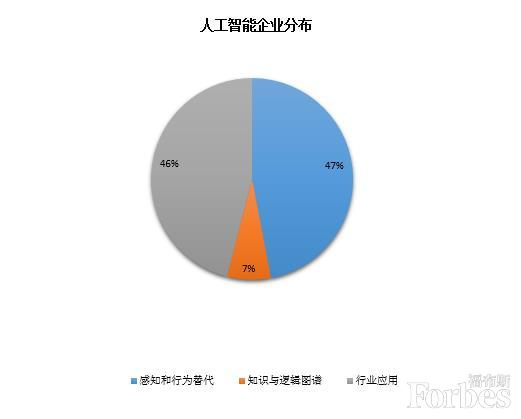
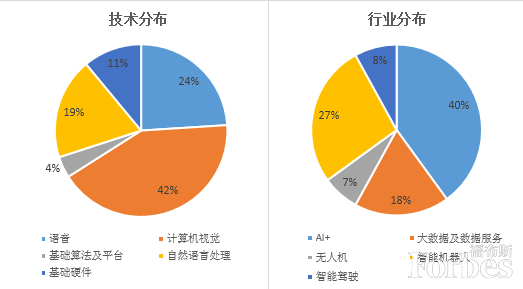
(2) Clarify the thinking, the artificial intelligence industry chain is divided into "basic layer", "middle layer" and "application layer"
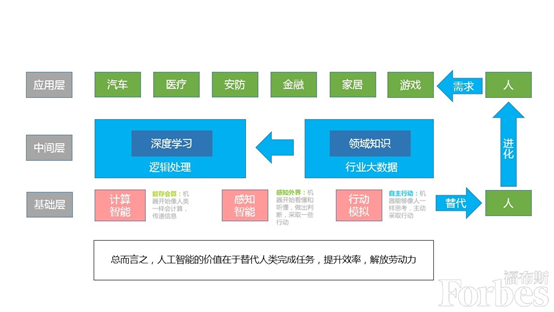
Figure 4: The AI industry chain can be divided into "base layer", "intermediate layer", and "application layer"
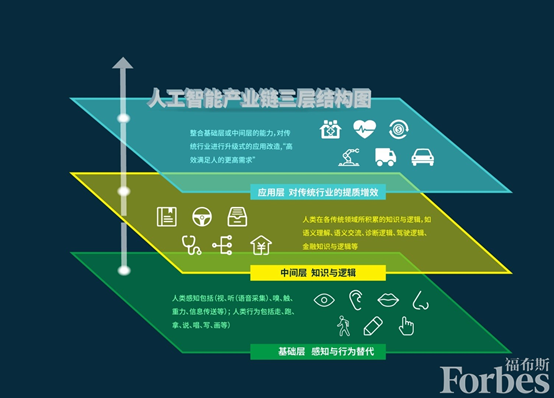
Figure 5: Three-tier structure of the AI industry chain
According to the above situation, in order for China to occupy the commanding heights of human AI industry opportunities in the future, we propose to redefine and divide the AI industry according to the value stream into three industrial sub-areas: "basic layer", "middle layer" and "application layer":
i. The "basic layer" is mainly dominated by hardware and data resources such as sensor chips and power transmission, and solves the problem of AI "replaces and develops human perception and behavior capabilities"
ii. The "middle layer" is particularly important to solve the logical problem of AI "replace and develop human knowledge" so that it can think and produce like domain experts;
iii. The "application layer" is combined with various traditional industry fields, integrating the capabilities of the basic layer or middle layer to realize the transformation of AI into various industries, and the upgrading of application transformation of traditional industries, which solves the problem of "efficiently meeting the needs of people Demand "service issues.
Figure 1: Definition of the three layers of the artificial intelligence industry chain
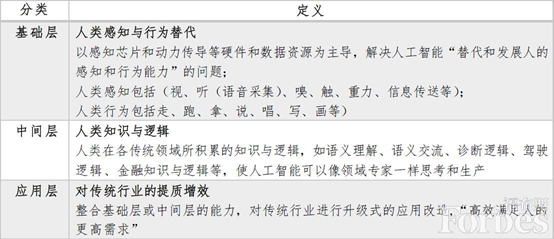
From the perspective of the development of AI, from the initial storage and processing of data to the time when it can be sensed by machines to "read and understand" external information, make appropriate judgments, and automatically and semi-automatically perform the next step. In the future, AI will generate autonomous consciousness and actively judge the next action based on self-learning and evolution, thereby comprehensively assisting or replacing human work. Among them, the "basic layer" and "application layer" are very suitable to be developed on the basis of "industrial civilization". Therefore, the development of China's AI industry is likely to be based on these two. Only the "middle layer (knowledge logic layer)" is an industrial sub-field with distinctive characteristics of the era of information civilization. I have to point out that if there are only two ends of the base layer and the application layer, and no intermediate layer (knowledge layer or logic layer), machine capabilities and machine services will be blinded. The "middle layer" involves domain knowledge and logic. To improve productivity through AI in each traditional industry, you must have a deep understanding of the domain knowledge and logic of this industry in order to inherit innovation and effectively develop (machine learning) new Domain knowledge and logic, so that there will be no deviation in the general direction, and the results transformed will be valuable.
Therefore, clarifying the AI industry organization and fully understanding the existence and importance of the "intermediate layer" of the AI industry are the prerequisites for finding the "grabbing hands" of the industry. However, what is the current status of the industry?
(III) Investigation of Typical Cases of the AI Industry and Reflections on the Status Quo of the Industry
In view of the above considerations, the research team rushed to three representative AI companies and the Shanghai Economic and Information Commission to conduct on-site investigations, and in-depth understanding of the AI industry's operating environment, policy support, technological level and industrial structure status. The survey results provide an empirical basis for the suggestions and opinions of this article.
Figure 2: Description of AI field research companies

The survey results are summarized as follows:
i. "Middle-tier" technology has strategic significance for AI companies and the industry as a whole. The companies surveyed and the Shanghai Economic and Information Commission all agreed with the "basic layer", "middle layer", and "application layer" AI industry classification methods. They also strongly agreed that the "middle layer" plays a central role in China's AI industry strategy. It is an area that needs to accumulate "moats".
ii. The "middle layer" is necessary for various industrial applications, but "independence" is generally not achieved. The investigation found that even if the AI companies at both ends of the "basic layer" and "application layer", as long as products enter the market, they need more or less intermediate layers (logic and knowledge map) to support hardware and industrial applications. . However, in addition to middle-tier companies that are deeply rooted in the development of AI middle-tier technologies, the "middle-tier" technologies applied by leading companies at both ends of the "basic layer" and "application layer" are often in the hands of overseas institutions or a few large enterprises, or It is the lack of a solid scientific foundation to “patch together”.
iii. The reason why most companies fail to own the "middle tier" core technology is the pressure of survival. The reason for the insufficient development of the core technology of the "middle layer (knowledge and logic map)" is that although enterprises generally think that accumulating and possessing "middle layer" technology is a long-term strategic moat when they carry out future strategic planning and prospects, they are suffering from the current The pressure to survive or to quickly increase the current market share, they chase each other in the low-level marketization channel of AI in a "short-frequency and fast" manner, often without resources or time to take care of the "middle-tier" R & D and accumulation.
iv. The scientific research "middle layer" requires the correct selection of machine learning methods. AI needs to acquire the correct knowledge and logical map through machine learning. Machine learning can be divided into unsupervised learning, supervised learning, and reinforcement learning, and then extended downwards. The diagram is as follows:
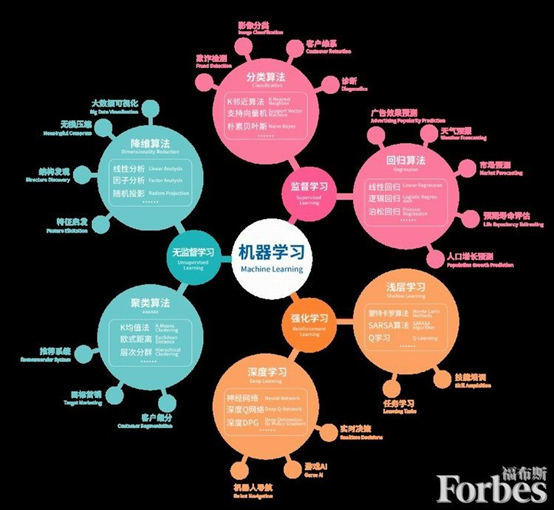
Figure 6: Machine learning method classification
On the one hand, we must pay full attention to the importance of supervised learning. Different from the daily life field, the fields with deep industry knowledge such as medical care and finance need to use supervised learning algorithms to consolidate the authoritative knowledge of the human professional field or the initial knowledge and logical map of widely recognized knowledge accuracy for transfer learning, but not 0 basis Unsupervised learning, such as the failure declared by Watson of IBM, is a typical case, which shows that the optimization of the so-called "algorithm" itself cannot reduce the methodological errors caused by "unsupervised learning". On the other hand, supervised learning requires data evidence for "supervision", of which only those initial knowledge and logical maps ("golden standards") that consolidate the knowledge of human professional authority or widely recognized the accuracy of knowledge are suitable for generating effective Layers "can even be used for transfer learning or small sample learning to improve learning efficiency. Generally speaking, sample data or evidence is divided into three categories, type A evidence is unbiased data, type B evidence is the expert group opinion, and type C evidence is an expert opinion. Among them, type B evidence is often affected by the selection of experts. Only supervised big data evidence (type A evidence) produced by supervision practice is the true “gold standard”. Supervised learning algorithms are used to model knowledge maps based on type A evidence. Transition and evolution methods are more effective. Although this "gold standard" is often encountered but not required, the development of the "intermediate layer (knowledge and logic map)" technology core still has to follow scientific logic and methods; there are many so-called "knowledges" generated by "unsupervised learning" Atlas is blindly sought after by the market and needs to be identified and properly guided.
v. Research and development of the "middle layer" of science requires the correct selection of data types or attention to data quality. The correct knowledge logic map generated by effective machine learning is the key scientific core of AI development, and the object of machine learning (industry big data) is also crucial. Statistics is the basis of AI's algorithm. There is a popular phrase "spam data in, garbage results out" in the statistics community. The "devil phenomenon" caused by zero-based unsupervised learning starting from "junk data" or C-type evidence should be avoided. For example, in the medical field, although systematic evidence-based medicine practices have a low misdiagnosis rate of evidence data that truly meets the requirements of Class A data, there has been a long-standing trend in China to "diagnose and inspect the room" to determine diagnosis and treatment plans. Sexually biased medical practice produces “medical big data” with high mean and standard deviation of misdiagnosis, which is typical type C evidence (rather than type A evidence), so not big data is reliable. The academic and business circles often confuse concepts when applying. When Type A evidence is not found or can not be identified, learning is performed on the basis of Type B or even Type C data with high mixed noise and high systematic offset. These contain a large number of "false positive" and "false negative" data that have been machine-learned ("knowledge maps"), and it is difficult to exceed the high misdiagnosis rate mean and standard deviation information represented by "junk data" itself.
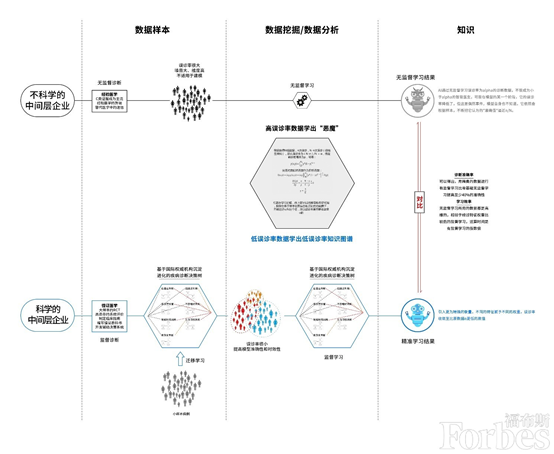
3.Some suggestions on the development of China's AI industry
In summary, we should give full attention to the support and development of the "intermediate tier" sub-field of the AI industry, focusing on the "intermediate tier" grabbers. We recommend:
(I) Pay attention to, support and guide the scientific development of AI “middle-tier” enterprises in the industrial planning process
Clarify the status and importance of the "intermediate tier" in the AI industry planning. For enterprises that are rooted in the "intermediate tier" of AI or have international leadership in the "intermediate tier", give priority support to various industrial policies including taxation and reduce The pressure of corporate survival enables the "middle-tier" companies to focus on the continuous evolution and improvement of the "middle-tier (knowledge and logic map)" and encourages their leadership. At the same time, guide the scientific development direction of AI "middle layer", emphasize the reliability of data and the necessity of supervised learning methods in the development and evolution of artificial intelligence "middle layer (knowledge and map)", and formulate data evidence and learning in machine learning Methodological guidelines or standards to avoid the "bad currency expelling good currency" effect in the development of the AI industry and restrict the long-term development of the integrated industry.
(2) Fully guide and encourage AI companies to develop innovation and accumulation of "middle-tier" technology
On the one hand, by supporting the taxation or related policies of AI companies, guide AI companies not to pursue fast profits, thereby leaving time and space for "intermediate layer" innovation and technology accumulation, and enhancing the "intermediate layer (logical knowledge and map)" R & D and accumulated attention. On the other hand, support the market-oriented application of the "middle tier" with independent intellectual property rights, such as giving priority to government procurement projects, so as to strengthen the hard power of the development of China's AI industry and avoid being passive in international competition.
(3) Aiming at the field of core knowledge maps for the "AI +" or "+ AI" industry, building several national-level "intermediate-tier" shared resource platforms will help alleviate the "intermediate-tier (knowledge and logical map)" foundation and Inadequate R & D efforts
The country builds the "intermediate layer" core knowledge and logical map shared resource platform, which can greatly alleviate the current "intermediate layer (knowledge and logical map)" background and insufficient research and development efforts in the AI industry, and can promote artificial intelligence "application layer" in the short term And "basic" industry development. While encouraging the "middle-tier" enterprises to continue to develop the "middle-tier" core knowledge and logical map applicable to various industries, the state actively discovers, summarizes, and integrates high-quality resources to build an industry shared resource platform. By improving the "middle-tier" resources, Effectively use and configure to enhance the overall strength of China's AI industry, which is conducive to overtaking in the "AI era".
(4) Strengthening data resource thinking and forming a data resource strategy to consolidate the "middle-tier" industry development foundation by sharing a class A evidence pool
Big data in various industries that meet the characteristics of Type A evidence is a necessary learning resource for the "middle layer (knowledge logic layer)" subfield. The current industry data is mainly in the hands of a few large Internet companies or various information islands. The security and usage specifications of these data are also in the enterprises and institutions themselves. The government's overall supervision of data resources and data security are relatively weak. The government should strengthen the thinking of data resources, form a data resource strategy, strengthen the application of data coding in the whole society, break the barriers of all parties, and extract, clean, verify, and label data from traditional industries, resolve the situation of data islands, and improve privacy Data utility, actively encourage marketization to explore the application value of data resources in various fields of production and life, build a common data pool, for example, through automatic identification, translation, adaptive evolution and other technical processing to achieve the privacy protection and industry of big data in the health care industry Application of intelligent docking and security guarantees, so that more innovative companies in the AI field can use these basic data resources to promote the optimization and upgrade of their algorithm models and solutions, tap more potential growth points, facilitate people's lives, and promote production in the information age .
(V) Pay attention to the supply of "middle-level" talents and improve the constraints of insufficient talents on the development of China's AI industry
At present, the “intermediate layer (logic and knowledge map)” required by AI for machine learning is very scarce, and there are two problems in training: on the one hand, AI is a cross-domain and multi-disciplinary technology application, and there is no AI "New majors", advanced mathematics, multivariate statistics, computer science and other professionals can meet the research and development needs of the underlying technologies such as machine learning methods required by the AI "middle layer" in big data mining and pattern recognition; on the other hand Yes, just like the famous saying in the field of data mining and actuarial science, "All data should be business (generated from and serve business)". What needs to be paid attention to is the training of compound talents. Mathematical professional skills such as multivariate statistics and medical care should be strengthened. The integration and interaction of related application areas such as finance, urban planning, machinery, security, and deepening understanding of traditional industries can effectively alleviate the constraints of China's lack of AI talents on industrial development.
This article is based on investigations by Tang Ziou, Su Jianbo, Zhou Shijie, Zhao Xiaoguang, Han Jia, and He Yilin of the
Central Science and Education Commission of the China Democratic National Construction Association.
Original link: http://www.forbeschina.com/technology/599

